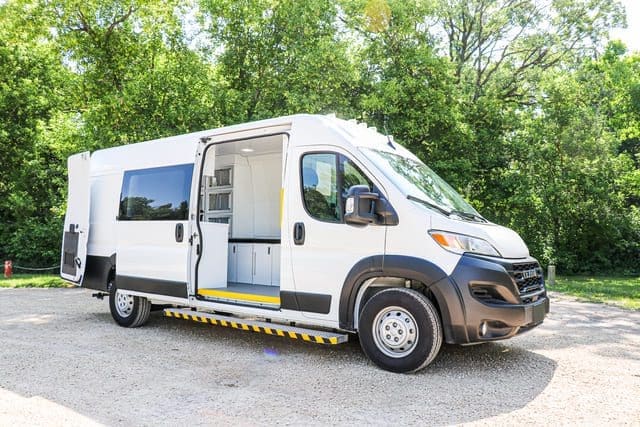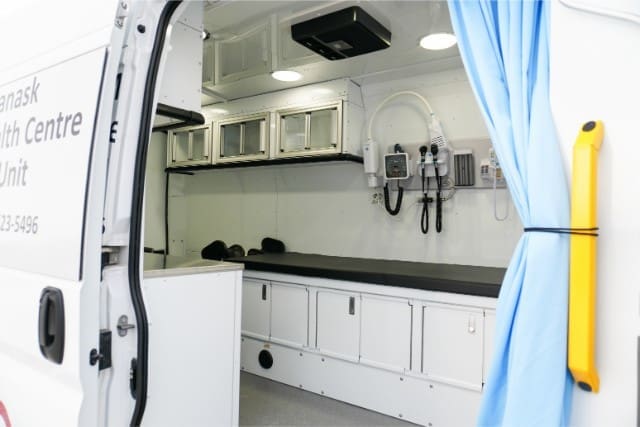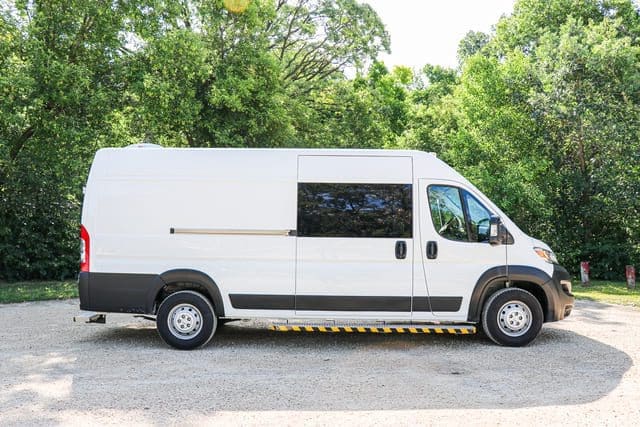Did you know that about 37 million Americans live with chronic kidney disease? Many of them depend on regular dialysis to stay alive, and transportation for dialysis patients can make or break their care. If you’re responsible for making sure patients get to dialysis treatments, you know the pressure. One missed ride can snowball into health crises, hospital stays, and a lot of heartbreak.
The real gap? You’re expected to deliver safe, reliable rides… without the right vehicle built for the job. That’s a huge weight to carry. But the right vehicle changes everything, keeping patients on track with treatments, lowering the discomfort involved with hospital visits, and giving families peace of mind.
At AVAN Mobility, we understand what you’re going through. For over 10 years, we’ve built mobile medical units trusted by organizations like yours and Pacific Clinics across the U.S. From mobile clinics to dedicated counseling units, our vehicles are built to perform and built to last. We listen first, build second, and always focus on removing barriers to care. While we’re proud of our vehicles, we know we’re not the only option, so we’ll stick to helping you make the best decision for your needs.
In this article, you’ll learn about five of the most important things to look for in a vehicle for transportation for dialysis patients.
1. Why should comfort matter in dialysis patient transport?
Imagine needing dialysis three times a week. Now imagine getting there jammed on a crowded, noisy bus with hard seats and barely any room to breathe. It’s no surprise your back would start aching, and your stress levels would climb right along with it.
That’s the reality for many people who rely on public transit to get to dialysis. It’s tough, uncomfortable, and exhausting. Transportation for dialysis patients should feel safe and comfortable, not like another hurdle to fight through.
When your organization is picking a vehicle for transportation services for dialysis patients, comfort isn’t a “nice to have.” It’s one of the most important things. People going to dialysis treatment are often already dealing with pain, weakness, or nausea. A rough ride just makes everything worse.
Here’s what comfort really looks like for transport for dialysis patients:
- Spacious seating: No squeezing into tight spots.
- Soft, supportive seats: To help with back pain and soreness.
- Smooth suspension: Less bouncing around on rough roads.
- Quiet interior: A calm, peaceful ride helps reduce stress and anxiety.
When you choose a vehicle designed around comfort, you’re giving patients a break—literally. You’re helping them arrive feeling a little better, not worse. That’s a huge step toward better health outcomes and happier patients.
Comfort is important, but it’s just one piece of the puzzle. Next, let’s discuss another piece: safety.
2. Safety features are essential in transportation for dialysis patients
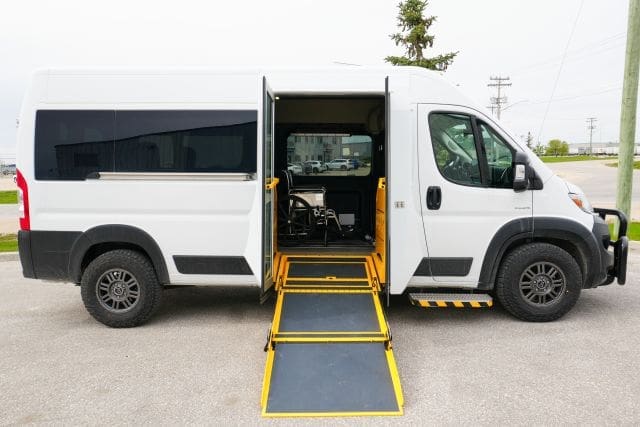
Getting patients to dialysis safely involves more than just driving carefully. It’s about having the right vehicle with the right safety features built in from the start. When you’re providing transportation for dialysis patients, you’re carrying some of the most medically vulnerable people out there. They trust you with their lives every single trip.
Picture this: someone is recovering from a rough dialysis session. They’re feeling dizzy, weak, and a little out of it. If the van doesn’t have the right support, like sturdy handrails or a safe lift, they could slip, fall, and land back in the hospital. The risk is real.
When looking at vehicles for transportation services for dialysis patients, pay close attention to these safety must-haves:
- Secure wheelchair restraints: No loose chairs sliding during the ride.
- Easy-to-use handrails and grab bars: Extra support for unsteady passengers.
- Non-slip flooring: Less chance of dangerous falls.
- Reliable lift or ramp systems: Smooth, safe loading and unloading.
- Backup cameras and sensors: Better visibility for drivers and added protection in busy areas.
Choosing a vehicle with strong safety features will protect everyone in and around your vehicle while you provide dialysis transportation, including your reputation.
Now that we’ve covered comfort and safety, let’s dig into another big piece: how easy the vehicle is to get in and out of. Accessibility matters more than you might think.
3. Accessibility makes a big difference in transportation for dialysis patients
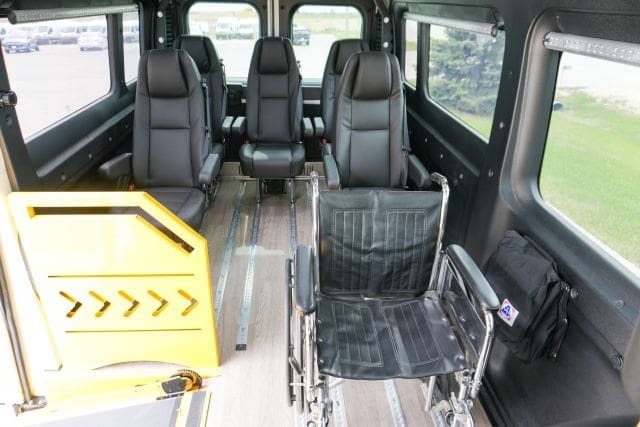
After a dialysis session, even standing up can feel like climbing a mountain. Now picture someone in a wheelchair trying to squeeze into the backseat of a small Toyota Corolla. It just doesn’t work. Transportation for dialysis patients needs to make getting in and out as easy as possible: No straining, crouching, or hoping someone can give them a boost into the vehicle.
A lot of people who go for dialysis treatments deal with weakness, joint pain, or limited mobility. Expecting them to step up into a bus or crouch down into a tiny sedan isn’t realistic or fair. That’s where the right accessibility features in your vehicle change everything.
When you’re picking vehicles for transportation services for dialysis patients, look for:
- Low-floor designs: Less stepping, less struggle.
- Powered ramps or lifts: Quick, safe boarding for wheelchairs and walkers.
- Easy-to-reach controls: Drivers can operate lifts quickly and safely.
Accessibility helps people move more easily and protects their dignity. It shows them they matter. When your transport services for dialysis patients are built for real-world needs, everyone wins: Patients, families, and your team.
Next, let’s discuss something that often gets overlooked: reliable climate control to keep patients comfortable no matter the season.
4. Temperature control can reduce post-treatment discomfort
Dialysis is already hard on the body. The last thing patients need is to be stuck in a freezing cold van in winter or sweating through a heatwave in summer. When you provide transportation for dialysis patients, keeping them comfortable during the ride is about protecting their health as much as it is about being respectful.
Many people feel cold, weak, or lightheaded after a dialysis session. Extreme temperatures make all of that worse. A van that’s too hot or too cold can quickly turn a simple ride into a risky situation.
Strong climate control is a must when you’re looking for vehicles for transportation services for dialysis patients.
Here’s what matters and why:
- Powerful heating systems: So patients stay warm in colder months.
- Reliable air conditioning: To avoid overheating on hot days.
- Zoned climate control: Front and back areas can be set at different temperatures.
- Good air circulation: Fresh, clean air helps patients breathe easier.
Choosing transport for dialysis patients with dependable climate systems shows you care about getting your patients safely to their treatment and that you care about how they feel along the way. It’s one more way to reduce stress, lower risks, and make every ride a little easier.
Next, let’s discuss something that ties everything together: why reliability and low maintenance are just as important as comfort, safety, and access.
5. Reliability and low maintenance tie everything together in your transportation for dialysis patients
When you’re providing transportation for dialysis patients, every missed ride matters. Dialysis isn’t flexible, and you can’t just skip a day and make it up later. If a vehicle breaks down, patients miss treatments. Health problems get worse. Families lose trust. Your team scrambles to fix the mess.
You need vehicles you can count on, day in and day out. Vehicles that don’t throw a wrench in your day with surprise repairs or maintenance issues.
When choosing vehicles for transportation services for dialysis patients, reliability is just as important as comfort, safety, or access.
Here’s what to focus on:
- Proven track record: Choose models known for long-term durability.
- Easy maintenance access: Parts and service should be quick and simple to find.
- Fuel-efficient engines: Helps save money when trips are frequent.
- Warranties and support: You’re not alone if something does go wrong.
Reliable transport for dialysis patients means fewer missed treatments, less stress for your staff, and more trust from the people you serve. It also saves you money by cutting down on repairs, towing, and downtime.
Now that you know the five biggest things to look for in a vehicle for transportation for dialysis patients, you might be wondering where to find a vehicle that checks off all these boxes.
Make dialysis trips easier with the Dialysis Patient Transfer Van from AVAN Mobility
When picking a vehicle for transportation for dialysis patients, you want something built for real life. Patients are often up early, home late, and making this trip three or four times a week. They need comfort, safety, and a little peace along the way.
That’s why we built the Dialysis Patient Transfer Van at AVAN Mobility. It’s made to help patients (and drivers) get through those long days a little easier.
Here’s what makes a difference:
- Reclining captain chairs: Soft, wide seats that lean back to help patients rest and relax.
- Strong heating system: Warm air comes from the ceiling and an extra heater behind the seats, so no one gets chilly after treatment.
- Tinted windows and blinds: Keeps the sun out and give patients more privacy.
- Starlink Wi-Fi: Lets patients watch shows, listen to music, or stay in touch while on the road.
- Wall USB ports: Easy spots to charge phones and tablets during the trip.
Every feature is there to make the ride smoother, more comfortable, and a lot less stressful. It’s the kind of transport for dialysis patients that helps people feel human again, even on their hardest days.
Ready to make transportation for dialysis patients easier, safer, and more comfortable?
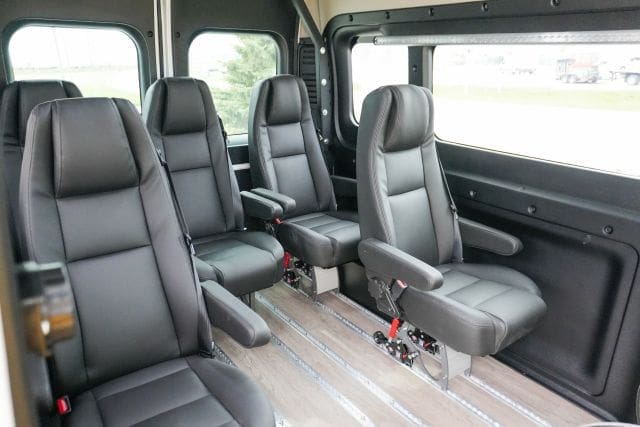
You came to this article because you’re facing a tough challenge: finding the right vehicle for transportation for dialysis patients. One that makes the ride to treatment safe, comfortable, and a little easier for patients who have already gone through so much.
Now you know what matters most:
- Comfort: Spacious, supportive seating that patients can relax in.
- Safety: Features that help prevent accidents and injuries.
- Accessibility: Ramps, lifts, and low floors that make boarding easy.
- Climate control: Keeping rides warm in winter and cool in summer.
- Reliability: Vehicles that keep your program running smoothly.
At AVAN Mobility, we build vehicles with purpose. We work alongside healthcare teams across the U.S. to create transportation solutions that remove barriers and support patient care every step of the way. Our focus is on making real-world travel easier, safer, and more dignified for the people who need it most. You deserve a partner who listens, understands, and delivers, and that’s exactly what we bring to every project.
If you have any questions about choosing a vehicle for transportation for dialysis patients, click the button below to talk with a mobility expert who’s ready to help.
If you’re not ready to talk just yet, we’ve got a few other resources you can check out to learn more.
Start by checking out our article on the differences between a ramp and a lift. If you’re wondering which option to choose, this may answer a few of your questions.
After that, you might also have a few questions about us. Read our article on what we do to learn more!



